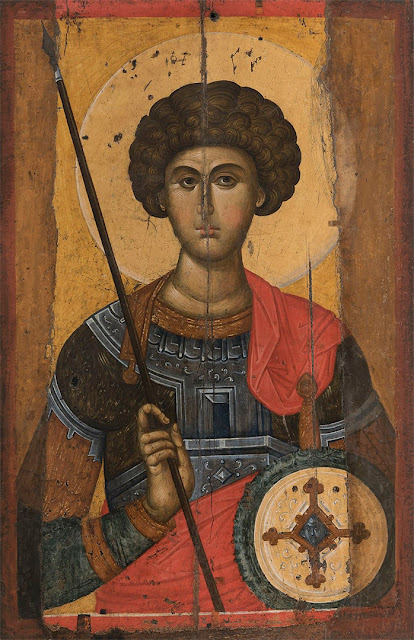On 24 June 2016, as part of the Year of Greece in Russia and Russia in Greece 2016, the exhibition Byzantium through the Centuries will open in the State Hermitage as one of the main events of this cross-cultural year. The exhibition has been organized by the State Hermitage and the Ministry of Culture and Sports of the Hellenic Republic.

Museums, libraries and monasteries in Athens, Thessaloniki, Kastoria, Veria, Corinth, Sparta, Rhodes, Argos, Chalcis, Boeotia, Serres, Lesbos and the Cyclades have provided items for display in St Petersburg. Never before has such a representative delegation of Byzantine “fine art” come to Russia from Greece.

Byzantium acknowledged and used icons created in various techniques and materials: painted; chased in gold, silver and copper, often with gilding; carved from marble, ivory, soapstone or wood; created with cloisonné enamel on a gold, silver or occasionally copper base; made from minute semiprecious stones and gilded silver plaques.

The State Hermitage possesses one of the finest collections of Byzantine icons of the 7th–15th centuries. One of the rare pieces in the Hermitage collection is a 12th-century icon of the Transfiguration with a red ground that was an element of an epistyle. The icon was a part of a single Festivals row painted on a long chestnut-wood panel, later sawn into separate scenes. A few icons from this complex have survived: two are in the Monastery of Vatopedi on Mount Athos; another, The Raising of Lazarus, is in the Byzantine Museum in Athens. Visitors to the exhibition will have the unique opportunity to see the Athens and Petersburg icons together.

Fairly often, though, especially in the provinces, people treated the legacy of Antiquity in a very simple manner: they would carve a cross on the forehead of a marble idol, thus sanctifying it and stripping the pagan deity of its power and authority. That is just what was done with the faces of Aphrodite and a boy from the 1st century AD from Athens included in the exhibition. While the finely engraved cross on the boy’s forehead was added with great sensitivity and tact, the face of the goddess of love suffered considerably. One more example of such Christianisation and re-use can be found in the Hermitage collection: the wall of a child’s sarcophagus carrying circus scenes was hallowed by a large Greek cross on the reverse.

Such transformations of precious items were, of course, only possible in the capital or major urban centres. It was also considered that the removal of pagan sculptures or altars from temples to other places “unbefitting a deity” would deprive them of their magical power. Consequently, the statues of Greek and Roman gods on the streets and in the buildings of Constantinople and other cities of the Eastern Roman Empire were no longer perceived as idols, but as decorative features. Admittedly, at the same time, a belief in the power and magic of the pagan deities quite often endured in the mass consciousness, coming to the fore at moments of need. Sadly, few of the ancient sculptures that were once in the Byzantine capital have survived.

Quite often floors with plant and geometric ornamentation, birds and animals, and even narrative subjects, also featured Christian churches. One such floor mosaic from the 6th century, found in Chersonesus, the Byzantine polis in the Crimea, was brought to St Petersburg in 1853 and installed in the Athens Hall of the Imperial Hermitage (now Hall 112).

The proclamation of Christianity as the official religion of the Eastern Roman Empire had no great impact on women’s love of expensive adornments that Christian authors declared to be attributes of evil and a low vice. In the jewellery of the early Christian period (1st–5th centuries), the general tendencies in shape and decoration remained fairly conservative over several centuries, while there was an astonishing variety in the details. The fashion was for both pure gold articles and those with inset precious stones and pearls, with the shape of the stones being as close as possible to that provided by nature. The range of techniques employed was also large: casting, chasing, stamping, raising, wirework, granulation (and false granulation), filigree and cold inlay. In the 9th–10th centuries cloisonné enamel was added to this arsenal.

The exhibition is accompanied by printed publications, explications and special films about Byzantium and the museums in the information zone.

An illustrated scholarly publication in Russian has been prepared for the exhibition (Art of Miraculous Beauty and Spirituality; State Hermitage Publishing House, 2016) with text by Yuri Pyatnitsky.
Source: The State Hermitage Museum [June 23, 2016]
VIA «'Byzantium through the Centuries' at The Hermitage Museum, Saint Petersburg, Russia»